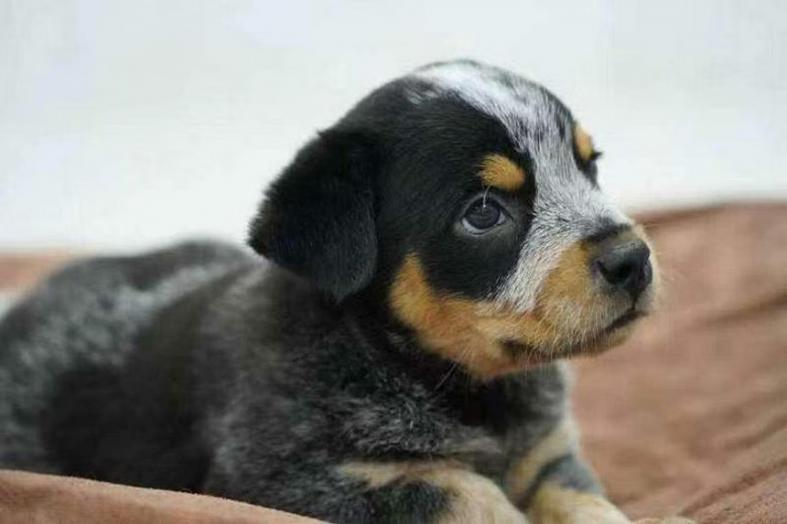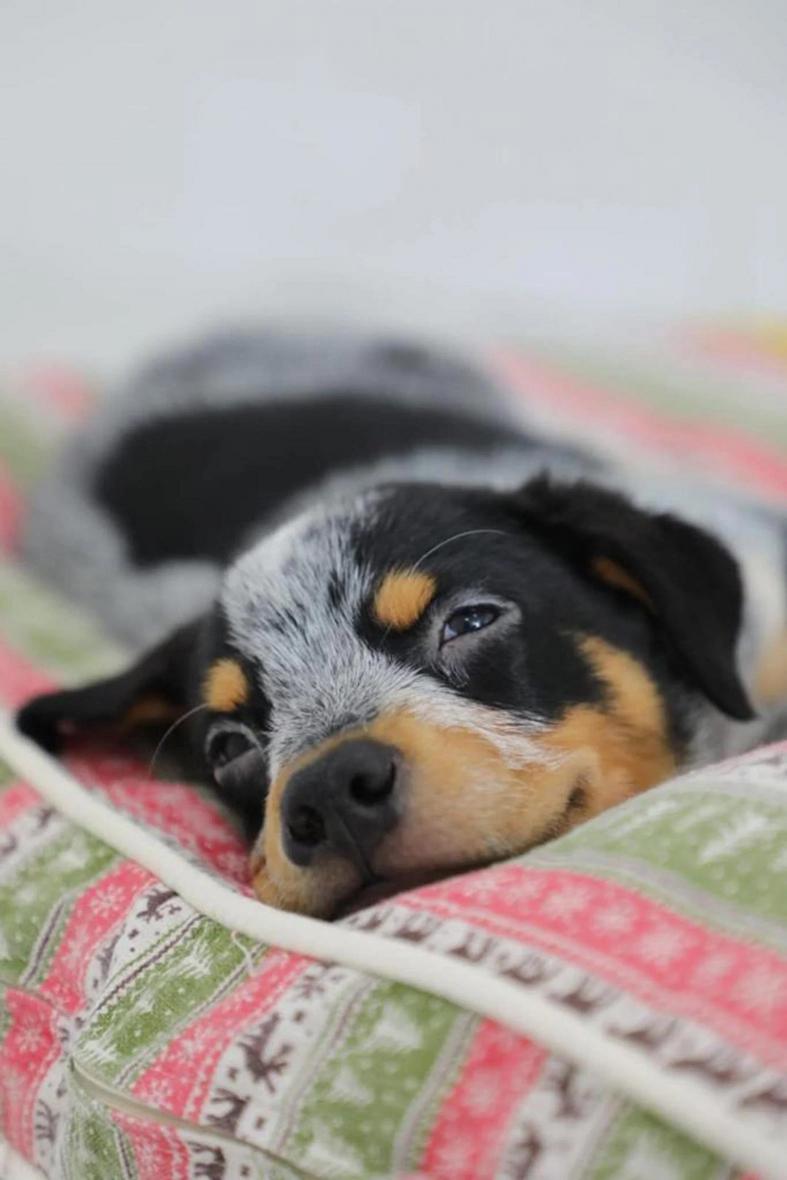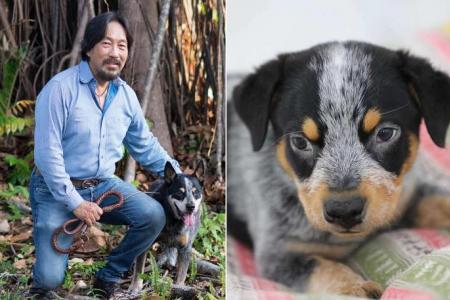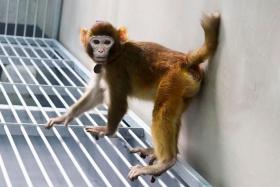‘I just wanted to see him again’: Vet Jean-Paul Ly on why he cloned his beloved dog
When Dr Jean-Paul Ly’s Australian cattle dog named Khan died in 2021 at the age of 17, the veteran vet “felt a bit lost”.
“I felt he passed away too early, I needed a bit more time with him,” the 73-year-old said.
He got his second chance when Khan was successfully cloned in China about a year ago, arriving in Singapore at the start of June.
He got his second chance when Khan was successfully cloned in China about a year ago and arrived in Singapore at the start of June. It spent the first month here in quarantine before being released to Dr Ly, who shed tears when he met his dog, which is also named Khan.
He admitted he had been apprehensive initially but “it all melted away within five minutes of meeting him”.
“He greeted me like he’d never left,” he added. “It was an explosion of emotions, him and me. Of course, I cried as well because I’m meeting my old Khan.”
While Khan junior has black patches on its back which the original Khan did not have, its “face is exactly the same”, said Dr Ly.
Its character is very similar to its predecessor, with both dogs “a bit stubborn (and) very confident”, he added.
Their first meeting was also uncanny. “The strange thing was, he obeyed every command I gave him. It was the first time I saw him; I’d never trained him before,” he recalled.
Although it cost US$50,000 ($67,000) to clone the dog and about US$20,000 more for its stay in China, airfare and other miscellaneous expenses, Dr Ly said there was no question that he would not have had Khan cloned.
“No one could have talked me out of it,” he added.
“The dog gives me more companionship, solace and affection than my family members put together,” he said, adding that he has three children “who have their own lives”.
Explaining the beauty of having a dog, he said: “When a dog is faithful, he’s faithful until death. He will be the first to die for you, if there was a fight. If there was a bear approaching me or a wild animal about to attack me, he would be the first to protect me. The rest of my family would probably run away.”
Besides Dr Ly’s deep love for the “very special” canine, guilt also played a part in his decision to clone Khan after he accidentally ran over the dog with his car about four years ago. The old Khan survived, but was seriously injured.

While Dr Ly, a vet with 48 years of experience, nursed him back to health after the accident, “he wasn’t himself again”. “So I decided to quickly harvest his skin cells.”
He took four skin samples from Khan under local anaesthesia. The samples were flown to Sinogene, a pet-cloning company in Beijing, where they were cryogenically frozen.
When Khan died more than two years ago, Dr Ly decided to “resurrect the cells” and clone him.
Sinogene chief executive Mi Jidong said the first attempt to clone Khan failed. The embryo with Khan’s genes developed in the surrogate bitch for about two months, which is the gestation period for dogs, but the cloned puppy died just four days after birth from unknown reasons.
“We started the second cloning attempt and, fortunately, it was successful. The cloned Khan has been healthy since birth,” he said.
Similar to IVF
The process of cloning is similar to in-vitro fertilisation (IVF), a fertility treatment, Dr Ly explained.
Instead of injecting a sperm into an egg in the case of IVF, the egg’s nucleus is removed and the nucleus of the pet’s cells, taken from the skin sample, is injected into the egg to clone the pet.
The now fertilised egg, which carries the pet’s DNA, is then reintroduced into the egg donor’s reproductive tract. This develops into a pregnancy for her to carry to term.
After undergoing a series of vaccinations, including one for rabies, and quarantine in China and Singapore, the cloned Khan finally moved in with Dr Ly when he was nearly a year old.
Dr Ly added that he was worried about “DNA problems” because the original Khan was very old when he took skin samples from it. But X-rays and blood tests on the clone revealed that he was “super normal”, much to Dr Ly’s relief.
Still, Dr Ly said he would not clone Khan again.
“There was a certain selfishness on my part,” he said. “I just wanted to see him again.”

Dr Chang Siow Foong, group director of professional and scientific services at the Animal and Veterinary Service (AVS), told ST that AVS “recognises the strength of the human-animal bond, particularly when it comes to one’s pets and companion animals”.
While he said that “there are no regulations against cloning, owners should be aware of the potential risks associated with cloning as these will affect the welfare of their pet”.
All cats and dogs that are imported into Singapore must comply with AVS’ import regulations, with no distinctions made for cloned companion animals.
In response to queries, Ms Aarthi Sankar, executive director of the Society for the Prevention of Cruelty to Animals (SPCA), said the cloning of pets raises ethical issues and the SPCA advocates against the practice.
She said that the process of cloning pets often involves numerous unsuccessful attempts and could lead to unnecessary suffering of the animals involved.
“Procedures like harvesting egg cells from dogs in heat and performing surgery on them for cloning purposes raise serious ethical concerns about animal welfare.”
“Another major concern is the high death rate of cloned pets, particularly in the early stages”, she added. “Studies have shown that a significant portion of cloned animals do not survive beyond 60 days and they are also reported to be more susceptible to diseases.”
Ms Sankar urged people to opt for adoption instead of cloning.
When asked about the ethical concerns surrounding cloning, Dr Ly dismissed them, saying that there is a lot of misunderstanding about the process.
The founder of Animal Wellness Centre said that the animals are not hurt during the process.
“We only take a pinch which is the size of a green pea, under local anaesthesia. There’s no pain. There’s one stitch. The dog is not tied down,” Dr Ly said about the process of obtaining skin samples, adding that placing microchips in pets with “a huge needle” is much more painful.
As for harvesting eggs from a female dog, he said, the only risk is from the anaesthetics.
“It’s a small incision and very often you can use an endoscope, you just suck out the eggs. That’s all you do,” he added.
Sinogene’s Mr Mi, 45, also said that cloned animals possess the same level of health, lifespan and reproductive ability as naturally bred animals, thanks to improvements in cloning technology.
The world’s first cloned dog, for example, lived for up to 10 years, which is similar to the lifespan of non-cloned dogs, he added. “Many of the animals cloned by our team have become parents, demonstrating their normal reproductive capabilities.”
Dr Ly said he was an SPCA vet in Australia and Singapore for 15 years.
“I don’t engage myself in any unethical things. Right from the beginning, I’ve never cut tails, never cut ears. I don’t debark,” he added.
He said that most of the pet owners who visit his centre choose to buy or adopt a new pet instead of cloning their pet, when presented with the choice.
“It’s a decision that they make because it’s their journey,” he said. “I don’t tell people what to do, especially when it comes to matters of the heart.”
Get The New Paper on your phone with the free TNP app. Download from the Apple App Store or Google Play Store now


